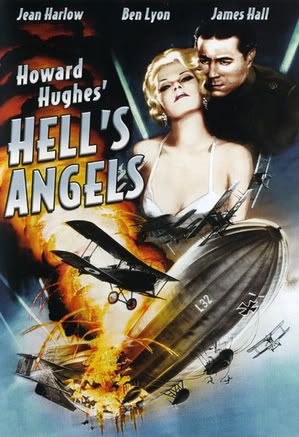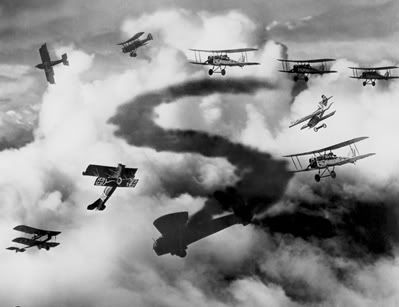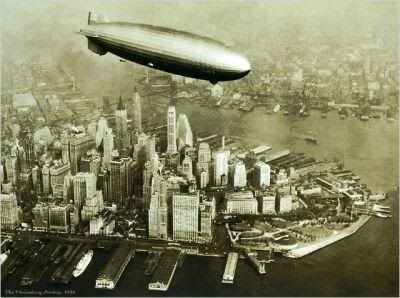
Recently, Melisa and I watched once of my favorite movies again--Howard Hughes' 1930 WWI spectacular Hell's Angels. I love the dialogue and period acting, the brotherhood of Roy and Monte Rutledge, the unrelquited love for Helen (Jean Harlow), and Melisa especially noted the the noble spirit of sacrifice for integrity in the RAF.

The movie was so big it had to be shot twice--once as a silent picture, then as a talkie for its final release. It cost an unparralelled $3.8 million to make, and 249 feet of film were shot for every foot used in the final cut. There are numerous beautiful tinted scenes in the film, but also an eight minute two-strip Technicolor sequence. Top Gun has nothing on the arial combat scenes of this movie. Three stunt pilots died during the filming of Hell's Angels and a forth died in a crash while delivering a plane to the set. Hughes himself crashed one plane for the sake of getting the perfect shot.
The night battle scene with the Zeppelin is my favorite in the movie. The Germans did use some dirigibles for bombing runs during the Great War. Hughes' fictionalized version could not have turned out better. Those scenes of "lightening the load" still give me chills.

In reality, there were twenty-three airship raids in over Britain in 1916 in which 125 tons of ordnance were dropped, killing 293 people and injuring 691. Anti-aircraft defenses were becoming tougher and new Zeppelins were introduced which were able to fly at twice the altitude, increasing the operating altitude from 1,800 m to 3,750 m. To avoid searchlights these craft flew above the cloud layer whenever possible, lowering an observer through the clouds to direct the bombing. The improved safety was counteracted by the extra strain on the airship crews and the British introduction in mid-1916 of forward-firing fighters. The first night-fighter victory came on September 2, 1916 when W. Leefe-Robinson shot down one of a sixteen-strong raiding force over London.

After the war, the dirigibles had a renaissance of sorts, becoming vessels of peace. In the early 1930s, the Graf Zeppelin was making regular non-stop transatlantic flights from Munich to Rio de Janeiro in Brazil in a matter of days rather than the weeks it took by ocean liner. The zenith of the rigid airships was to come with the LZ-129 (Hindenburg) and her sister-ship, the LZ-130 (Graf Zeppelin II). Each could carry up to 78 passengers and 61 crew. The size of these rigid airships was enormous. The Hindenburg was 804 feet long (that's a mere 78 feet short of a floating Titanic!). The modern Goodyear blimp is lest than a tenth of that length.


1 comment:
That movie is so boss!
Post a Comment